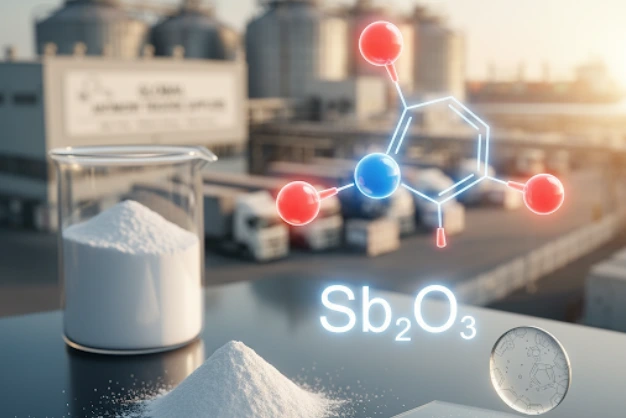TABLE OF CONTENTS
TABLE OF CONTENTS
Fumed Silica vs Colloidal Silica: Understanding the Differences
When choosing the right silica for a project, understanding the distinct characteristics and applications of fumed silica and colloidal silica is crucial. Both types serve unique functions in various industrial applications, yet they differ significantly in their physical properties and the benefits they offer.
Production Process and Physical Properties
Fumed Silica: Produced through the flame hydrolysis of silicon tetrachloride, fumed silica consists of tiny, non-porous particles. The process generates a powder that is amorphous, which means it does not possess a crystalline structure. This form is highly absorptive and is known for its ability to disperse well in polymers.
Colloidal Silica: Conversely, colloidal silica is produced by the controlled reaction of sodium silicate with sulfuric acid, which results in silica particles that are dispersed in a liquid, typically water. These particles are spherical and range in size from a few nanometers to about 150 nanometers. Unlike fumed silica, colloidal silica forms stable suspensions and does not agglomerate easily.
Key Applications
Colloidal Silica: Due to its excellent stability and ability to form a homogeneous dispersion, colloidal silica is often utilized as a polishing agent in the electronics industry for semiconductor wafers. It is also used in concrete densifiers and coatings where a smooth, fine finish is required.
Advantages and Limitations
Fumed Silica: The primary advantage of fumed silica lies in its versatility as a thixotropic agent, which can thicken solutions without significantly altering their weight or appearance. However, its hydrophobic varieties need careful handling to avoid moisture absorption, which can affect performance.
Colloidal Silica: One of the main benefits of colloidal silica is its stability in suspension, which is valuable in applications requiring precise silica placement without settling. However, its liquid form limits its use in non-aqueous systems.
Understanding the differences between fumed silica and colloidal silica enables professionals to select the most appropriate type based on the specific needs of their applications. Each type brings unique benefits to formulations, impacting product performance and application methods.
Fumed Silica vs Silica Fume: Key Differences and Industrial Applications
When it comes to specialized silica forms used in industrial applications, understanding the distinctions between fumed silica and silica fume is critical for selecting the right material for specific tasks. Despite the similarity in names, these materials differ significantly in their origin, properties, and uses.
Origin and Production Methods
Fumed Silica: Also known as pyrogenic silica, fumed silica is manufactured via a process called flame hydrolysis. This involves vaporizing silicon tetrachloride in a flame of hydrogen and oxygen to produce extremely fine particles of amorphous silicon dioxide. The resulting product is a very light, fluffy powder.
Silica Fume: In contrast, silica fume is a byproduct of producing silicon metal or ferrosilicon alloys in electric arc furnaces. The process involves reducing high-purity quartz with coal in an electric arc furnace, producing silicon vapor that oxidizes and condenses in the cool air to form fine particles.
Physical Properties
Fumed Silica: This type of silica is characterized by its very small particle size, high surface area, and amorphous state, which provide unique physical properties such as high viscosity and significant thixotropic behavior when mixed with liquids.
Silica Fume: Silica fume particles are extremely fine with diameters around 100 nanometers. It has a low bulk density and a high surface area, which makes it a highly effective pozzolan in concrete applications.
Key Industrial Applications
Fumed Silica: Commonly used to adjust viscosity, stabilize emulsions, and reinforce polymers. It is widely utilized in products such as paints, adhesives, cosmetics, and pharmaceuticals. Its ability to create highly thixotropic properties in mixtures makes it valuable in formulations that require controlled flow characteristics.
Silica Fume: Predominantly used in the construction industry, silica fume is added to cement and concrete mixtures to enhance their mechanical properties, including increased strength and improved resistance to abrasion and corrosion. Its pozzolanic quality significantly enhances the durability of concrete structures, especially in harsh environmental conditions.
Comparative Advantages
Fumed Silica: Offers superior performance in products requiring a clear, thickened consistency without compromising the chemical structure of the base material. It is particularly effective in applications requiring precise control over product texture and stability.
Silica Fume: Provides exceptional benefits in enhancing the structural integrity and longevity of concrete. Its inclusion in high-performance concrete mixtures is essential for constructing tunnels, bridges, and other infrastructures requiring superior strength and durability.
Understanding the distinct differences between fumed silica and silica fume is essential for professionals in industries ranging from cosmetics to construction. Each type of silica serves unique functions and offers specific advantages that can significantly impact the performance and quality of the final products. This knowledge ensures that the correct silica type is used to meet the specific needs of each application, maximizing efficiency and effectiveness.
Conclusion
In this exploration of silica’s various forms, we’ve demystified the differences and specific uses of fumed silica, colloidal silica, and silica fume. Each type serves unique functions across multiple industries, from enhancing product textures in cosmetics to fortifying concrete in construction. Fumed silica’s role in creating thixotropic properties in mixtures is indispensable for precise application needs, while colloidal silica excels in providing stability and uniformity in suspensions. Silica fume, with its fine particulate nature, is crucial for improving the structural integrity of concrete. Understanding these silica forms enables professionals to select the most effective type for enhancing the quality and efficiency of their products and projects, ensuring optimal outcomes tailored to the unique demands of their applications.
FAQs for Silica Variants Blog
Lorem ipsum dolor sit amet, consectetur adipiscing elit. Ut elit tellus, luctus nec ullamcorper mattis, pulvinar dapibus leo.
Fumed silica is an amorphous form of silica made through flame hydrolysis. It’s known for its high surface area and unique properties like thickening liquids and preventing caking in formulations.
Colloidal silica consists of silica particles suspended in a liquid, typically water. Unlike fumed silica, which is dry and powdery, colloidal silica is used for applications that benefit from stable, liquid dispersions.
Silica fume is primarily used in the construction industry to enhance the mechanical properties of concrete and cement, improving strength and durability.
Fumed silica is safe when handled properly with the right safety equipment, such as masks and gloves, to avoid inhalation of its fine particles, which can cause respiratory irritation.
Colloidal silica is typically used in aqueous solutions due to its stability in water. However, specialized types are also designed for non-aqueous environments, depending on the formulation requirements.
Silica fume contributes to concrete’s strength and durability by filling in voids and reacting chemically to form strong bonds in the cement, making it denser and more resistant to environmental stresses.
Fumed silica is produced via flame hydrolysis of silicon tetrachloride, colloidal silica is created by acidifying sodium silicate, and silica fume is collected as a byproduct of silicon metal or ferrosilicon alloy production.
Contact Us
Questions or looking for a quote?





